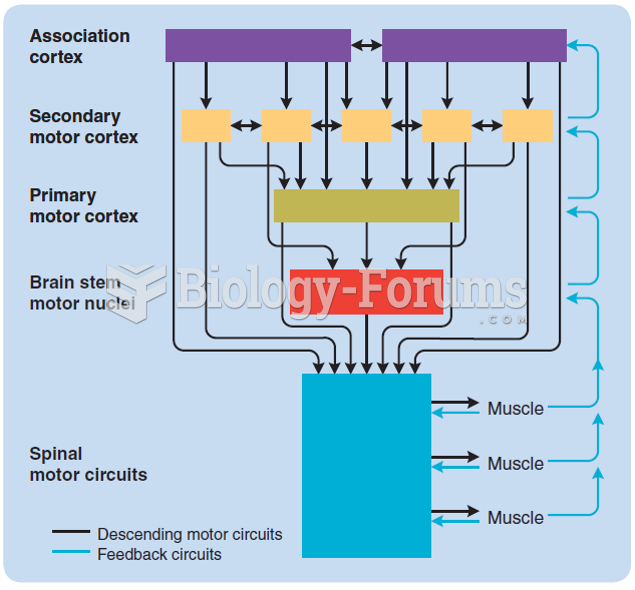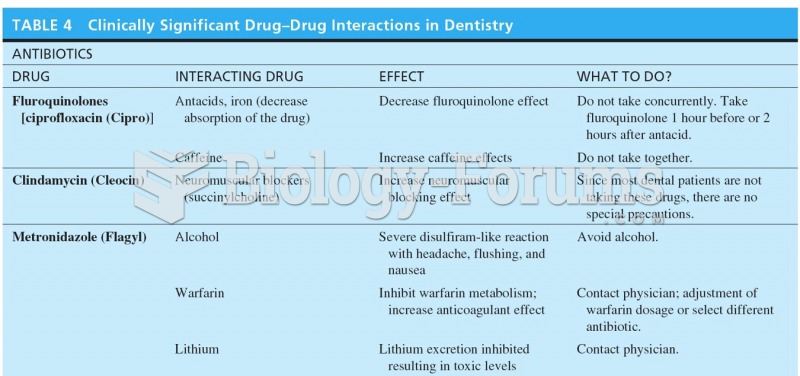|
|
|
Vaccines prevent between 2.5 and 4 million deaths every year.
More than 30% of American adults, and about 12% of children utilize health care approaches that were developed outside of conventional medicine.
After 5 years of being diagnosed with rheumatoid arthritis, one every three patients will no longer be able to work.
Children of people with alcoholism are more inclined to drink alcohol or use hard drugs. In fact, they are 400 times more likely to use hard drugs than those who do not have a family history of alcohol addiction.
The liver is the only organ that has the ability to regenerate itself after certain types of damage. As much as 25% of the liver can be removed, and it will still regenerate back to its original shape and size. However, the liver cannot regenerate after severe damage caused by alcohol.







